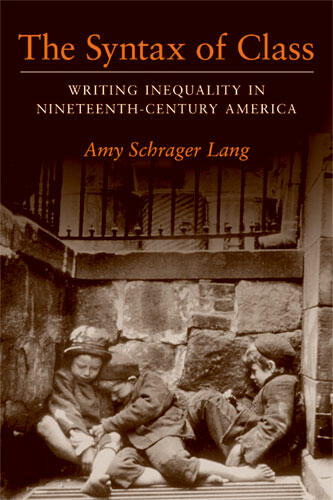The Syntax of Class
Writing Inequality in Nineteenth-Century America
Explores the literary expression of the crisis of social class in the U.S. throughout the second half of the nineteenth century
Description
Lacking a native language for expressing class differences, American writers in the wake of the European revolutions of 1848 struggled to find social taxonomies able to capture—and manage—increasingly apparent inequalities of wealth and power. As new social types emerged, and with them, new narratives of success and failure, police and reformers became weary of the “dangerous classes,” while novelists as different as Maria Cummins, Nathaniel Hawthorne, Frank Webb, Elizabeth Stuart Phelps, and Horatio Alger, Jr., focused their attention on engagements across the lines of class. Writers turned to the middle-class idea of “home” as a figure for social harmony and to the lexicons of race and gender in their effort to devise a syntax for the representation of class.
Amy Lang’s finely achieved study charts the terms through which these writers rendered class distinctions and follows these renderings as they circulated in and through a wider cultural discourse about the dangers of class conflict. The result is a valuable exploration of the operation of class in nineteenth-century American fiction—and of its entanglements of this language with those of race and gender.
Amy Schrager Lang is Professor of English at Syracuse University. She is author of Prophetic Woman: Anne Hutchinson and the Problem of Dissent in the Literature of New England and co-editor of What Democracy Looks Like: A New Critical Realism for a Post-Seattle World.
“Lang’s ability to move seamlessly between author and character, and her insistence on the relevance of class to both, offer an entirely new window into nineteenth-century literature.”
--Women’s Review of Books
“A tightly focused, original, and elegantly argued study of the operation of class in nineteenth-century U.S. fiction . . . To read The Syntax of Class is to understand the great extent to which U.S. nineteenth-century fiction produced the hegemonic middle class within a context of debates over inequality.”
--Cecelia Tichi, Vanderbilt University

